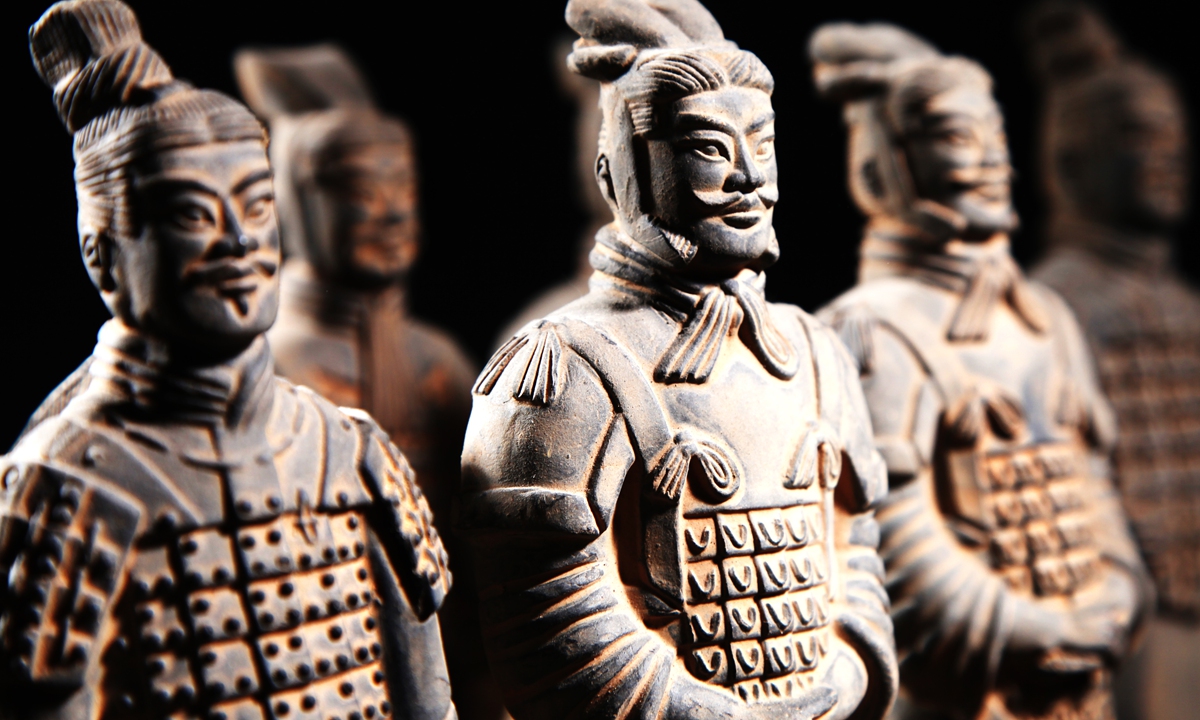ARTS / CULTURE & LEISURE
Chinese archeologists clarify production procedure of Terracotta Warriors at Emperor Qinshihuang's Mausoleum

A Terracotta Warrior Terracotta Warriors A statue of a Tang maid The Great Mosque The ancient city gate tower of Xi’an Photos: VCG The Muslim street Biangbiang noodles Roujiamo Xi’an Olympic Sports Center
In the latest excavation of the No.1 pit of Emperor Qinshihuang's Mausoleum, Chinese archeologists have made more progress in researching and restoring burial objects at the mausoleum, one of the most mysterious royal graves in China, including the production process of the Terracotta Warriors and their weapons.
Archeologists have restored more than 140 Terracotta Warriors discovering that the arms of these figures were created separately and then attached after the bodies were made and covered in fine clay. Detailed carving was completed before the arms were attached, according to the China National Cultural Heritage Administration.
The pit yielded a variety of weapons with different lengths and functions, including long-range attack weapons, shields for defense, as well as drums and drumsticks used for commanding soldiers.
The third excavation of No.1 pit began in 2009, covering an area of about 430 square meters. More than 220 terracotta figures, 16 terracotta horses, four chariots and other cultural relics such as weapons and production tools have been identified to date.
A ruin site in Northwest China’s Shaanxi Province was excavated recently and archeologists discovered remains of some architectures such as temples, dwellings and shops as well as sculptures with features of both Han and Mongolian ethnic groups.It is believed that this site served as a market between the two groups during the Ming Dynasty (1368-1644) and reflects the fusion of different ethnic groups in ancient China.
